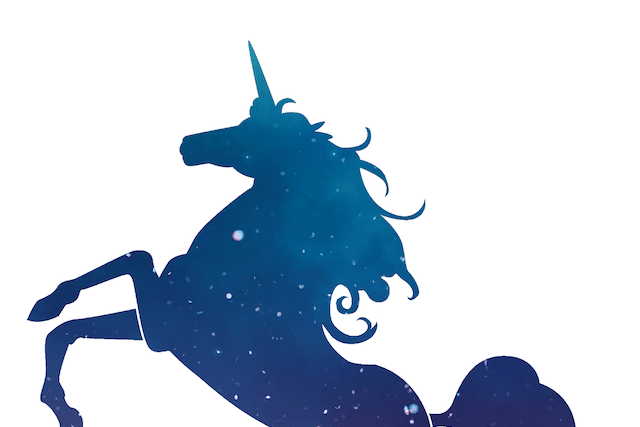Sumerian is the oldest written language, dating back to 3100 BCE. Language itself is believed to have started somewhere between 100,000 and 200,000 years ago, when humans developed the capacity to speak using what we understand as a voice box. And since that time it’s estimated humans have come up with an estimated 31,000 languages. Around 6,000 of them are still in existence today. And with that many languages, it’s not hard to imagine translations from one language to another don’t always go as planned.
10. Icelandic Dracula is Basically Fan Fic

Bram Stoker’s Dracula is one of the most famous novels of all time and has never been out of print since its publication in 1897. It’s also been translated into 30 languages in that time so all people around the world can enjoy it. The most noteworthy translation dates back to 1901 when Valdimar Asmundsson translated it into Icelandic.
For 113 years, this was the definitive translation of Dracula for anyone who spoke Icelandic and no one in that time realized one crucial detail – it wasn’t real. Asmundsson didn’t actually translate the book as Stoker wrote it. Instead, he added his own twists and turns to create a new store that included more gore and sex and also some new characters.
The version Asmundsson published was shorter and full of action that almost exclusively takes place in Transylvania. It was essentially an early version of fanfiction and no one bothered to compare the text to the original for over 100 years.
9. Our Daily Bread Is Translated from a Word No One Knows

If you read the Lord’s Prayer, you’ll recognize the line “give us this day our daily bread.” You can also trace this back to Latin where the line is “panem nostrum quotidianum da nobis hodie” In this translation quotidianum means daily. And then, if you go all the way back to the original Greek text, you’ll find the phrase ??? ????? ???? ??? ????????? ??? ???? ???????. In this version, ????????? translates to epiousion.
The common translation is what you’d expect based on what we’ve established here, that epiousion means daily. The problem is that epiousion doesn’t appear anywhere else. Not just in the Bible, but anywhere. The single appearance it made in any other writing was from a 5th century accounting papyrus that has since been lost.
Epiousion has no etymology. It’s linked in no definitive way to any other words, so the translation to the word “daily” is something of a mystery. “Epi” is translated as a prefix meaning “for” while “ousion” was taken to mean “for the being” in relation to the current day.
The problem with translating the word as “daily” is that the word “daily” appears plenty of other times. It’s translated as hemeran, which was a fairly common word. So to pick a brand new, never before seen word doesn’t make a ton of sense. And, of course, it seems like there’s no chance we’ll ever get to the bottom of it.
8. The Aristotelian Multi-language Translation Rollercoaster

Everyone who’s ever set foot in a philosophy class knows Aristotle. He’s been called the father of virtue ethics, political science, comparative anatomy and physiology, logic and probably many other things. Despite this, a remarkable amount of Aristotle’s writings have been lost. The West only had access to a small number, while the Muslim world actually had quite a bit more thanks to their historical conquests. And because of this division, modern Aristotle is the result of so many translations and re-translations, it’s arguable that we have no idea what the man ever truly said.
Many of Aristotle’s works were lectures, so not specifically things he wrote, but said and then were written down by others. His works first appeared in Greek and then were translated to Syriac, an Aramaic dialect. The writings were then translated into Arabic.
Christians in Europe began the process of translating Aristotle after this and it happened in several places and times. At one point, Jewish rabbis translated the Arabic texts on behalf of Christian monks into Spanish and then into Latin. None of this was done with the benefit of a dictionary and is the reason that many Arabic words entered the English language like alcohol. Algebra and even coffee.
7. Refried Beans Are Not Refried

If you like Mexican food, you probably enjoy refried beans and why not? They’re delicious. They’re also not as old as something like tortillas or guacamole, which are also strongly associated with Mexican food. Refried beans have only been around for about 100 years, and owe most of their popularity to Tex-Mex cuisine.
In Spanish, refried beans are called frijoles refritos. Translate that back into English and you don’t get refried beans, you get “well-fried” beans. And, to address the confusion of English speakers who want to make the beans from scratch, you don’t fry them twice. You don’t even fry them once, really, you just mash them and cook them in a pot with onion and spices. Refried is just a mistranslation of “refritos” that became so well known no one bothered to fix it.
6. Biblical Unicorns May Have Just Been Aurochs

If you’ve committed to reading through the Bible, you may have noticed that unicorns pop up a number of times. That’s a bit of a curious thing to notice since, regardless of your position on religion, mythical beasts typically aren’t the sorts of things that are involved in it. And the mentions of unicorns are never really done in a way that makes them sound fantastical or metaphorical.
The word that was later to be unicorn was “re’em,” a Hebrew word. It described a strong, horned animal. So sure, that could be a unicorn. But it could just as easily have been an aurochs. These were a species of cattle that stood about six feet high at the shoulder. Basically, giant cows with forward curving horns. They went extinct in 1627.
Depending on which book and which translations we’re dealing with, the word may also be oryx or even rhinoceros.
5. The Not So Abominable Snowman

You can find stories of a mysterious wild man in remote locations all over the world. North America has Bigfoot, which rose to fame in the 1950s and is based around Native American myths that are over 1,000 years old. Over in Asia they have the Yeti, which got anglicized as Abominable Snowman back in 1921 by journalist Henry Newman.
Newman was interviewing British explorers who had just come back from Mt. Everest and had seen large footprints there. The local guides explain that the footprints were made by something called “metoh-kangmi” or the “man-bear snow-man.” So, basically, the Yeti.
In translating the name, Newman kept the snowman part but translated “metoh” incorrectly. His first stab at it gave him the word “filthy” but apparently the Filthy Snowman didn’t have the right ring to it so he swapped in Abominable. As the first real contact most of the Western world had with the story, the name stuck and has remained ever since.
4. Aladdin Was Added to Arabian Nights By Its French Translator

The book One Thousand and One Nights, sometimes known as Arabian Nights, is an extremely popular work that collects numerous Middle Eastern folktales and was first published in the 1700s. Characters such as Ali Baba and Sinbad joined pop culture as a result of the book and, most famously, Aladdin.
Aladdin is where things become most interesting in regards to the work as a whole. The tale of the boy who finds a magic lamp and woos a princess is well known to everyone these days thanks to Disney. But it was never actually part of the original story. It was added later when the book was translated into French by Antoine Gallard. Prior to that, the story had never seen print. So where did a French translator get one of the most famous stories of the Arabic world from?
Well, the story wasn’t from the Arabic world at all to begin with. That was added later. The original story took place in China, not the Middle East. And Galland’s source was alleged to be a Syrian man named Hanna Diyab. He supposedly told the story to Galland who then wrote it down. He inserted it into 1001 Nights of his own accord, with no real way to confirm any of the sources or how he chose to translate it, and it became a part of history.
3. The King of the Jungle Never Lived in a Jungle

Giving a nickname to animals is not all that common, but it does happen. Dogs have been known as “man’s best friend” for ages. And the most well known nickname any animal species has is probably the lion with its moniker “king of the jungle.” The king part comes from the lion’s mane, which has been likened to a crown many times over the years. They call them “king of the beasts” as well. But it’s not the king part that’s weird, it’s the jungle part.
If you’ve ever been on safari, or just watched nature documentaries about lions in the wild, you may have noticed that lions tend to live on the savannah. They like open spaces. Lions do not live in jungles. So why would anyone call them the king of a place they don’t live in?
Jungle is a word borrowed from Hindi and Sanskrit and, depending on your source, it may be “jungle,” “jangle,” “jangala,” or even “jingli.” All of those words do have the same meaning, however, which essentially means wild or uninhabited places. Like a savannah. The specific meaning of a dense forest is not attributed to the word and arguably would never be in the area from which the word originates, since they don’t have jungles there. The evolution of the word into English came to include dense forest and left the original meaning behind.
2. Firefox is a Red Panda
If you’ve been on the internet since the beginning, there’s a good chance you’re on your seventh of eighth browser by now. Way back in the day, people were using things like Netscape to view the web before Internet Explorer and Safari made their debuts. And, in time, we ended up with Google Chrome, Opera and Firefox.
Firefox is an easily recognizable browser and, as of January 2022, accounts for just over 4% of global browser usage.Not a huge chunk by any means, but its popularity is fairly stable. And even if you don’t use it, you probably recognize their flaming fox logo. The weird thing is, it was never supposed to be a fox.
Mozilla, the company behind Firefox, started in 1998 after Netscape died. It was made by many of the same people and their logo was originally a phoenix. Makes sense,right? They were rising from netscape’s ashes. They needed to change their name from Netscape to something new, so they wanted an animal that not a lot of people were familiar with at the time. They chose the red panda. The Firefox logo, despite the name, is a red panda. The problem lies in a translation error and the fact that a stylized, cartoon red panda can very easily look like a fox.
Many words take on literal meanings when translated from a language like Chinese into English. So the Chinese word for red panda, which is “h?o hú” literally translates to fire fox. Because that’s kind of what a red panda looks like, which is why so many people assume the animal in the logo is an actual fox.
1. The Sailor Cousins
Sailor Moon was one of the first anime shows to hit big with Western audiences in the ’90s. The franchise is worth billions, and it’s still going strong upwards of 30 years later. Despite this, there were some noticeable changes made to the show from its Japanese origins to the English version Western audiences saw. The most egregious translation shift was the change in Sailor Neptune and Sailor Uranus.
In the West, these characters are cousins. Really close cousins. The English translations made them relatives, but in the source material they are a couple. The relationship was changed to be less controversial in the West, sidestepping the idea of a lesbian couple which the studio deemed inappropriate for a children’s show. What they created was something arguably more controversial since all they did was change the dialogue and the result was a pair of cousins who were clearly flirty and romantic with one another. The translation was unable to adequately account for their on screen actions and just made the entire show weird.